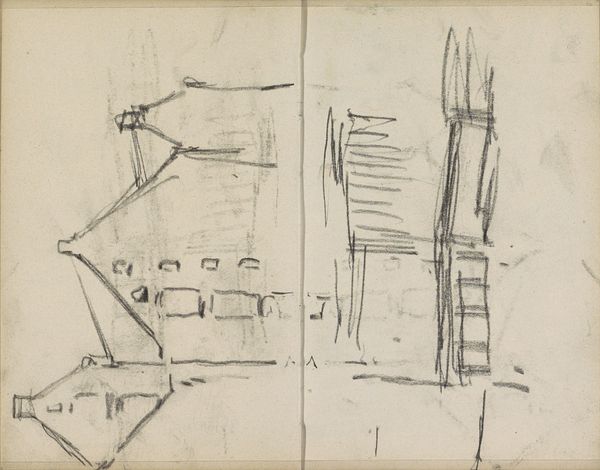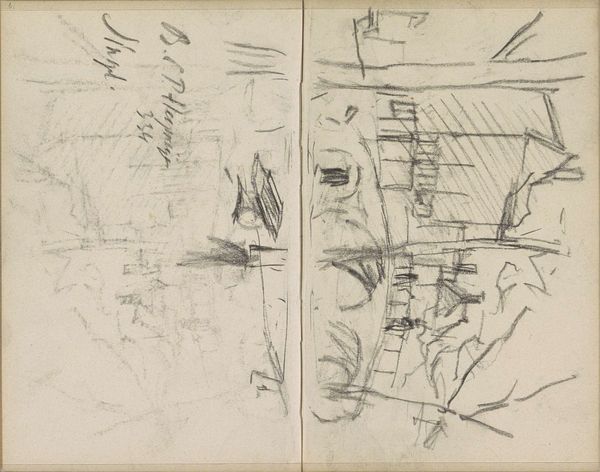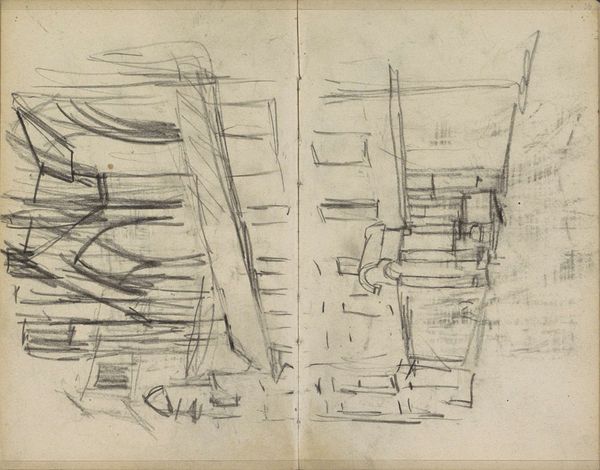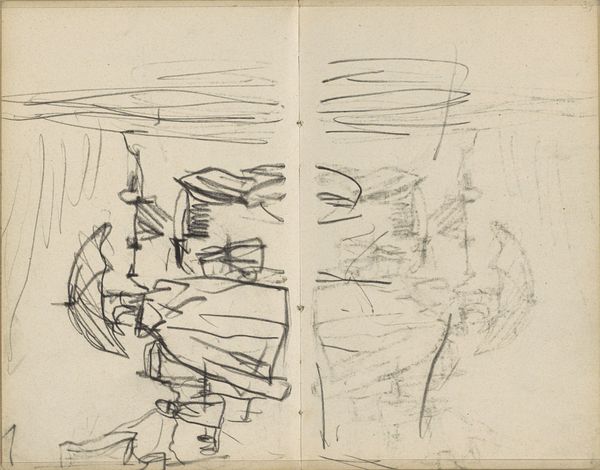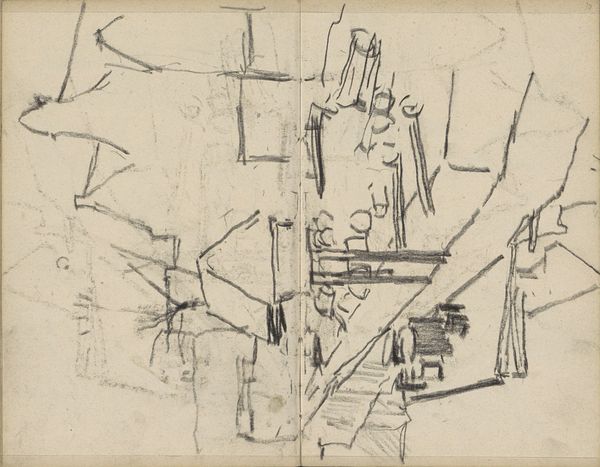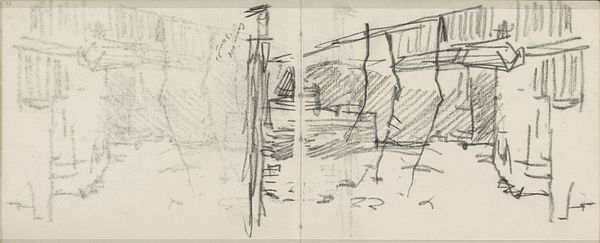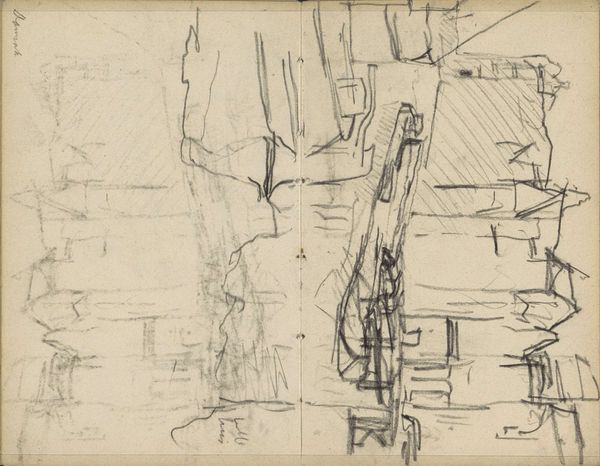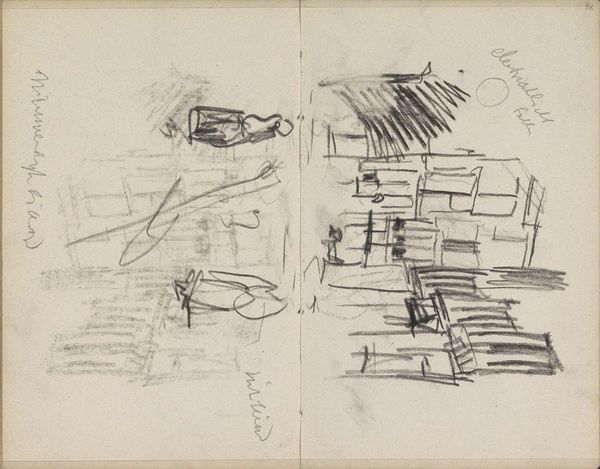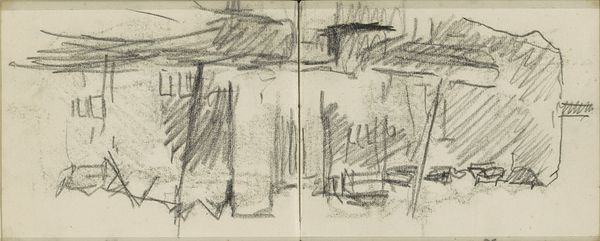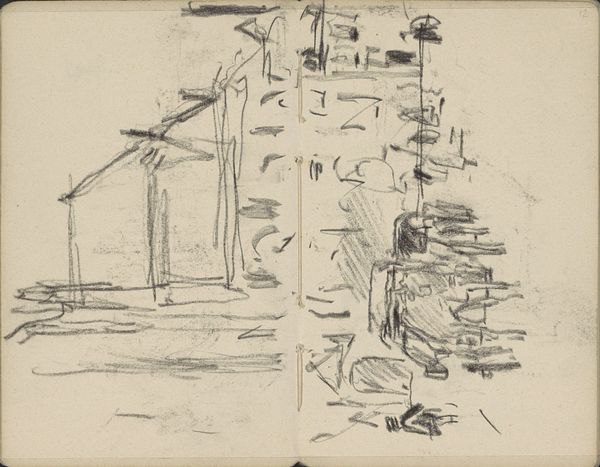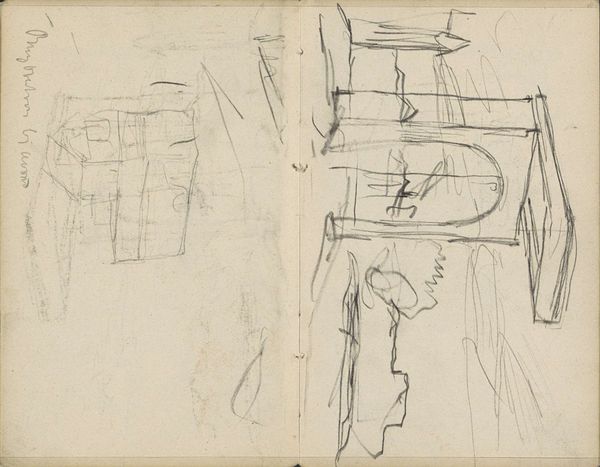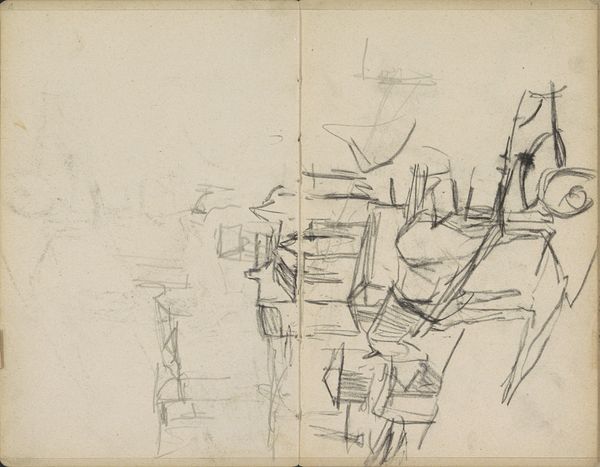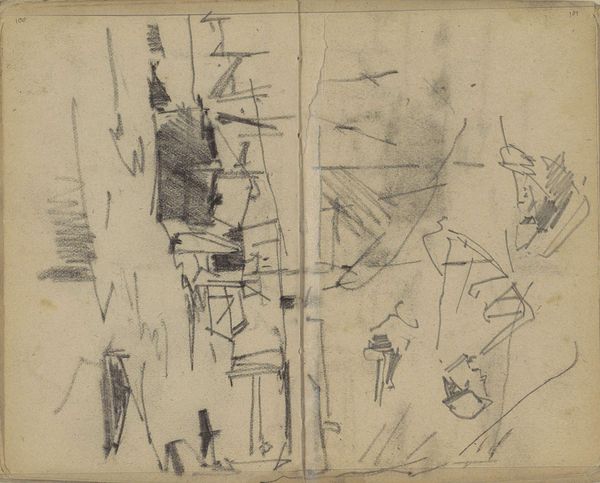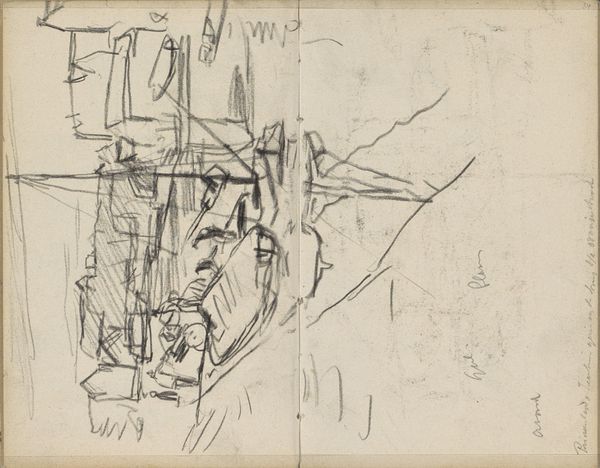
Copyright: Rijks Museum: Open Domain
Editor: Here we have George Hendrik Breitner’s “Gezicht op de Nieuwe Teertuinen te Amsterdam,” created sometime between 1912 and 1919 using graphite and ink on paper. The frantic, scratchy lines really capture a sense of urban grit. What stands out to you? Curator: It's more than just grit, I think. This sketch, born from the realities of early 20th-century Amsterdam, isn't just a snapshot of a street; it's a lens into the socio-economic structures shaping urban life at the time. Editor: Could you elaborate on that? Curator: Breitner's work often depicted the working class and the marginalised. While seemingly an innocent street scene, we might consider who populates this space, and what social forces impact it? The Nieuwe Teertuinen, even today, carries echoes of its industrial past. Consider who benefits and who is potentially disadvantaged. Editor: That’s a good point; the lack of people and bleak strokes do feel heavy. It makes you think about the lived experiences of those who were present but aren’t represented. The absence is kind of telling. Curator: Precisely. And it compels us to question the narrative typically presented in art history, often dominated by the perspectives of the wealthy and powerful. Doesn’t it invite a deeper understanding of whose stories get told and whose are omitted? Editor: I see what you mean. It pushes you to see art as more than just aesthetics but as a commentary, even when it appears simple on the surface. Curator: Exactly, it’s about acknowledging art as a social practice embedded within power structures. This transforms our appreciation, adding layers of interpretation. Editor: That gives me a whole new way to look at it! Curator: And hopefully, a new way to question the world around us.
Comments
No comments
Be the first to comment and join the conversation on the ultimate creative platform.
